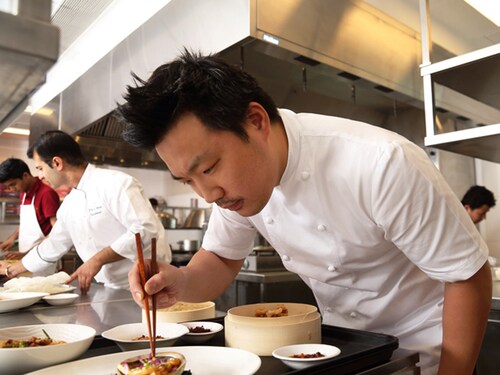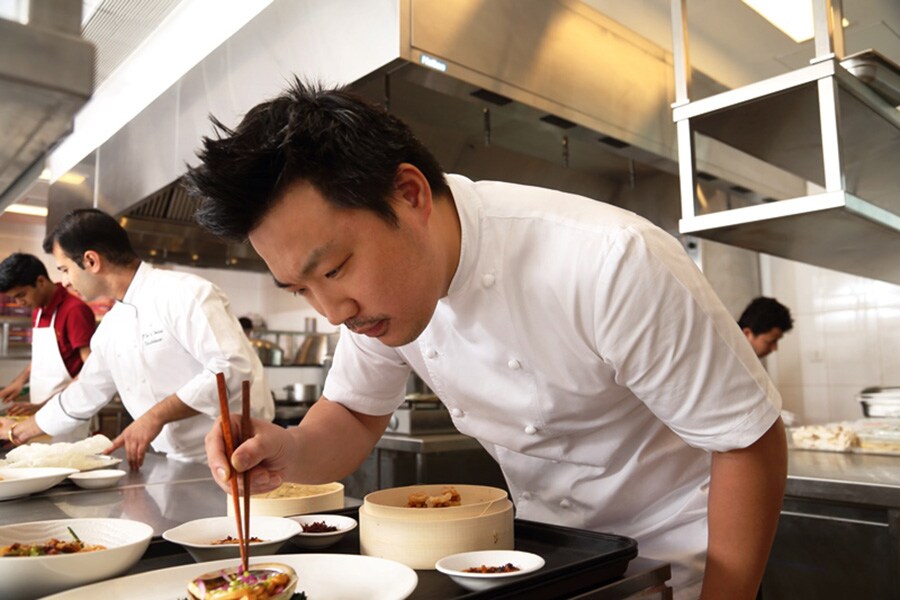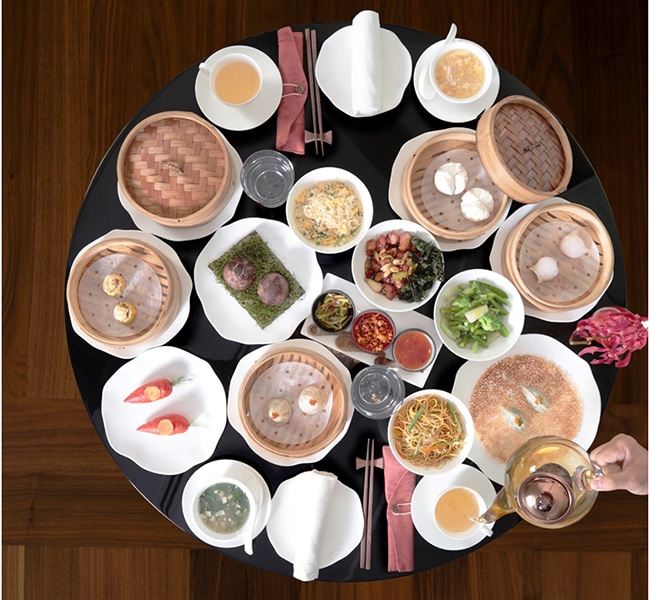I want to showcase the diversity of Chinese food: Andrew Wong
The celebrated Michelin-starred chef is in India, serving dishes from 14 Chinese regions at Baoshuan, the rooftop restaurant at the Oberoi, New Delhi


 Chef Andrew WongBorn and raised in a family of restaurateurs, chef Andrew Wong—who received his first Michelin star in 2017—never wanted to become a chef. He studied chemistry and anthropology and some of the world’s best institutes as destiny would have it, but after his father died, he went to help his mother with the restaurant business, and the rest is history. Wong is in New Delhi, on a mission to showcase the diversity of Chinese cuisine.
Chef Andrew WongBorn and raised in a family of restaurateurs, chef Andrew Wong—who received his first Michelin star in 2017—never wanted to become a chef. He studied chemistry and anthropology and some of the world’s best institutes as destiny would have it, but after his father died, he went to help his mother with the restaurant business, and the rest is history. Wong is in New Delhi, on a mission to showcase the diversity of Chinese cuisine.
He is the mentor-chef at Baoshuan, the Chinese rooftop restaurant at The Oberoi, New Delhi, where the menu features innovative takes on traditional recipes. He spoke to Forbes India over email about his fascination with India and the experience he intends to create for Indian diners. Edited excerpts:
Q. Could you tell us about the Baoshuan experience, particularly the interactive service style?
Coming to Baoshuan to eat is like coming to our home. That’s the pleasure of food—it brings people together, either personally or at a business level. We also want our guests to go on a bit of a journey with us and if the dish has historical or cultural references, we have fun anecdotes that we share while serving, but we want our guests to just relax and enjoy each other’s company too. For instance, we offer Peking Duck (we’ve also created a vegetarian option), served with pancakes. Traditionally, the component ingredients are served in the middle of the table and guests assemble the pancake themselves. At Baoshuan, the wait staff assemble the pancakes table-side for you, so you can still have it to your preference, but its minimal disruption to conversation.
Q. Take us through your journey so far, and the India experience?
We worked closely with the Oberoi team on the ground in New Delhi. We researched what was on offer in the city already from the Chinese side and took into account the culinary culture—vegetarian food, for example, is bigger here than in London. We then progressed to development, testing, tasting and selecting the best dishes for the restaurant. It took time, but the Oberoi were really accommodating and gave us control over that final selection. A year down the line now, things have really settled into their own skin. The menu has evolved too. I’m in constant contact with the chefs. The restaurant has become a destination in its own right.
Q. How did you go from studying chemistry at Oxford and anthropology at LSE to becoming a chef?
I wasn’t exactly sure what sort of career I wanted to pursue but it definitely wasn’t that of a chef! My parents had restaurants in London. When I left school, I went on to study chemistry at Oxford University as it seemed like the smart thing to do at the time. I realised that wasn’t for me and swapped to study anthropology at London School of Economics where I eventually graduated. It wasn’t until later down the line I would find out that anthropology and cookery go hand in hand!
When I was 22, my father died, and I came back to the family restaurant, Kym's, to help my mum. I realised I wasn’t all that bad at cooking and wanted to be the best I could be in the kitchen, so I enrolled in a London culinary school, specialising in classical French cookery and culinary science.
In 2010, I left London and set out on tour to widen my knowledge of Chinese cuisine. My first move was to Qingdao in Shandong province, studying at the Sichuan Culinary Institute, before gaining more practical experience in banqueting and the specialised techniques of Chinese roasting. Then onto Beijing to the ancient skill of traditional Peking duck, before heading to Hong Kong and the famous Cantonese dim sum.
I was fascinated by how food in China differed so dramatically according to region and culture, so when I came home my wife Nathalie and I closed down Kym’s and reopened it as A. Wong. Kym’s was originally a Cantonese restaurant but I wanted somewhere that I could experiment and put into practice everything I had learnt whilst in China. I wanted to open a restaurant that wasn’t bound to just one region. I wanted to showcase how diverse Chinese food can be and really celebrate the cuisine.
Six years down the line, A Wong has a Michelin star and I’ve just opened my second restaurant in London, Kym’s—the name in homage to my parent’s original restaurant. At Kym’s, the focus is on the ancient craft of Chinese roasting our dishes are my own take on some of the classics from China’s many gastronomic regions.
When I was asked to come to India to help develop a new restaurant concept, I was very excited. I’d never worked on a project like this before and the prospect of getting to learn more about India, the culture and the food scene really appealed to me. I even discovered a centuries-old trade link between China and India. So far, the journey has been fascinating.
Q. The menu at Baoshuan, stems from 14 different regions of China. How difficult was it to curate that, and what had you kept in mind while doing that?
I’ve always been passionate about serving regional cuisine, as I think it’s important to celebrate the whole culinary landscape of China. It was especially essential to do so at Baoshuan, as diners in India are so well travelled. Guests are looking for a more varied and interesting dining experience.
Q. Indians have been used to a certain style of Chinese food here. Does that influence your offerings here?
On the whole, I have found Indian people to be incredibly knowledgeable of different cuisines. The fact that they have been used to a certain type of food highlights exactly why we wanted to bring in something a little different.
Q. As a Michelin star chef, what would your advice be for upcoming chefs in India and around the world?
Keep going! If you want to perfect a new skill you need to do repeat approximately 100,000 times so it becomes part of your muscle memory.
First Published: Jan 21, 2019, 19:15
Subscribe Now